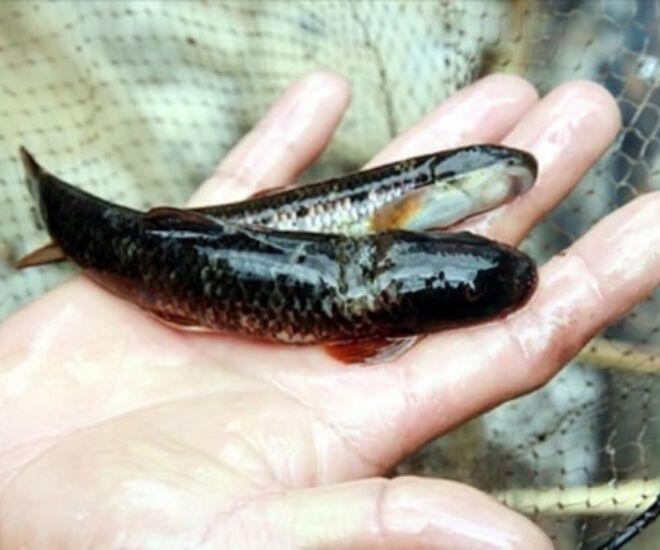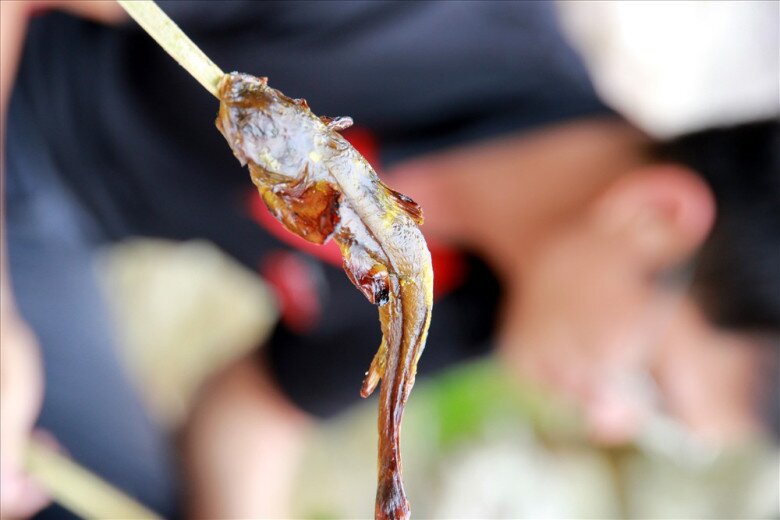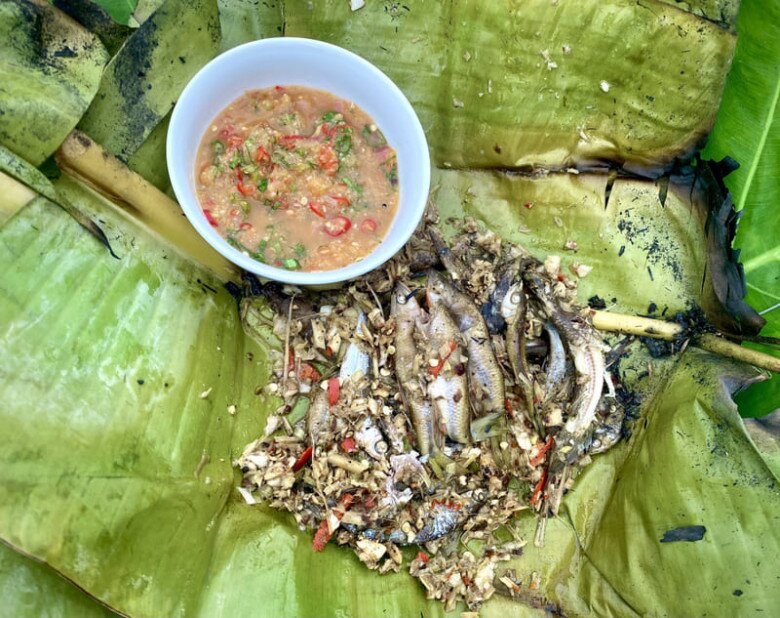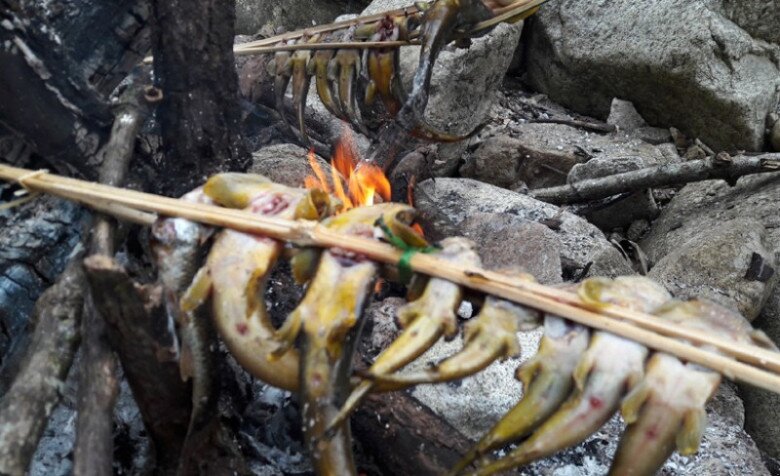
This unique fish species, no larger than a finger, boasts a glossy black back, a white belly, and fins adorned with shimmering red stripes. Resembling the common goby found in lowland regions, its true distinction lies in its flavor. From flesh to entrails, the fish carries a bitter taste, an intriguing sensation for first-time tasters. This bitterness stems from its natural habitat, as the streams of Sàng Mà Pho flow through mountain crevices rich in yellow gentian, a prized medicinal herb with a bitter profile. Feeding on the moss and herbs infused with this bitterness, the fish absorbs both the flavor and the herb’s therapeutic properties.
The Hmong people of Sin Súi Hồ explain that this bitterness, rather than being off-putting, initially tingles the tongue before melting into a subtle sweetness that lingers at the back of the throat, reminiscent of wild ginseng. This similarity has earned the fish the nickname “ginseng fish.” Considered a restorative tonic, it is reserved for honored guests or special occasions, believed to rejuvenate and alleviate fatigue.

Catching this elusive fish is no simple feat. Rare and cunning, it cannot be caught with conventional hooks or traps. Local communities rely on ancestral knowledge and a unique method: a powder derived from a forest tree bark. When mixed with water, this powder turns a deep red, intoxicating the fish, slowing their movements, and causing them to surface for easier capture. While mildly toxic to the fish, the powder poses no harm to humans, a practice honed over generations.
To catch the fish, villagers often trek deep into the forest, reaching the stream’s headwaters at an elevation of approximately 2,300 meters. This arduous journey, spanning several hours, involves navigating treacherous terrain, swift currents, and sometimes overnight stays in the forest during heavy rain. Many young Hmong men, skilled in this art, prepare meticulously with tents, food, and fishing gear, dividing tasks from netting to preparing the tree powder. Capturing a single batch of these fish is a labor of love, demanding strength, patience, and an intimate understanding of nature.
Once caught, the fish is prepared simply to preserve its natural essence. The Hmong often simmer it in a broth with forest greens and clear stream water or grill it over hot coals. Diners experience a bitter yet refreshing taste that gradually gives way to a lingering sweetness, creating an unforgettable culinary experience. A single small fish in a bowl of broth leaves a lasting impression, blending the familiar with the extraordinary.

Beyond its culinary value, the fish embodies the culture and hospitality of Sin Súi Hồ. While locals are familiar with it, serving it to visitors signifies deep respect, offering the forest’s most precious gift. This tradition reflects the Hmong’s commitment to preserving their heritage and fostering meaningful connections through a seemingly simple dish that encapsulates reverence and sophistication.
Locals also draw parallels between the fish’s bitterness and bamboo-segment ginseng, a once-common mountain herb resembling a centipede, with segments that darken annually. Historically, Hmong farmers chewed it for energy, but overharvesting has made it a rare, expensive commodity. Thus, the fish is cherished as “aquatic ginseng,” a reminder of the fading treasures of the forest.

Today, the fish’s population is critically declining due to habitat degradation and overfishing. Only the fortunate few, locals or visitors, have the chance to savor it. This serves as a stark reminder of the need to conserve nature and protect indigenous species. Without intervention, the fish may vanish, like the bamboo-segment ginseng, becoming a memory in Sin Súi Hồ.
Visiting Lai Châu, particularly Sin Súi Hồ nestled on the western slope of the Hoàng Liên Sơn range, offers more than breathtaking landscapes. It invites exploration of a unique culinary culture, with the fish as its emblem. This dish transcends its status as a delicacy, symbolizing the harmony between humanity and nature, tradition and highland identity. Tasting its bittersweet essence is a rare privilege, leaving an indelible mark on any journey through Lai Châu.

































